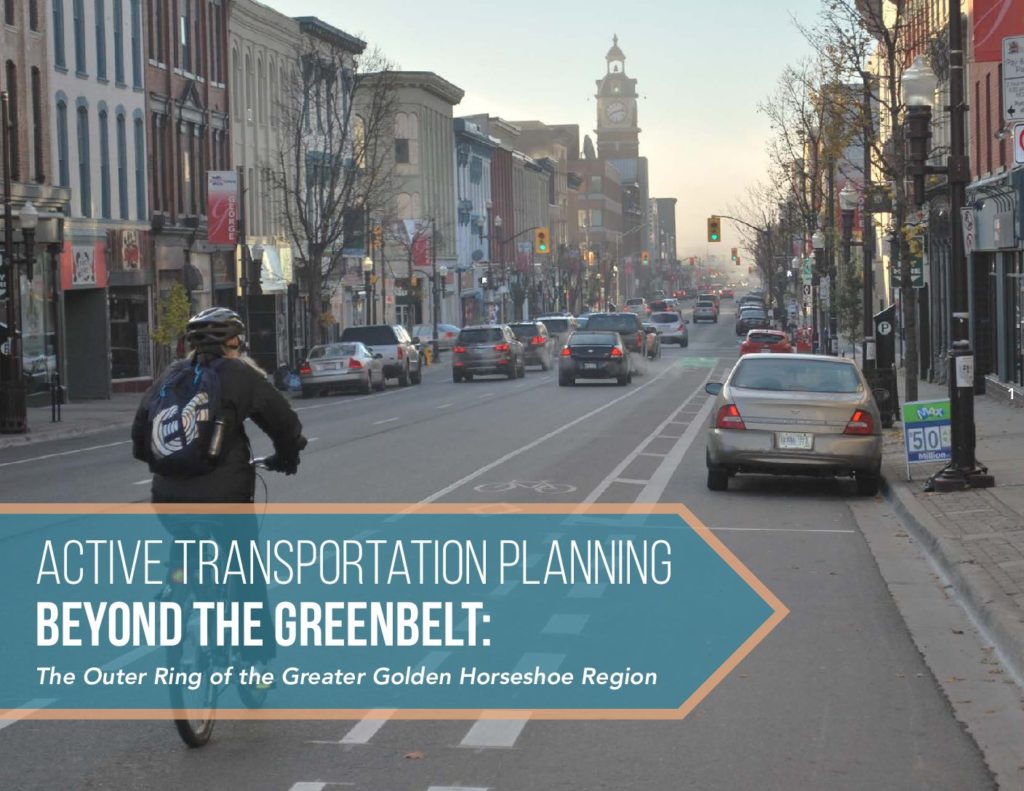Active Transportation Planning Beyond the Greenbelt: The Outer Ring of the Greater Golden Horseshoe Region is a book that profiles 13 projects that have improved conditions for walking and cycling in unique contexts beyond the Greater Toronto and Hamilton Area.
The Greater Golden Horseshoe Region is bifurcated by the Greenbelt, a broad band of permanently protected land. The Inner Ring, the most densely populated and urbanized section, is on one side of the Greenbelt, and the Outer Ring, comprised of more rural and smaller communities, is on the other side.
The book profiles 13 Outer Ring active transportation project examples in three different contexts:
- Rural: Wellington, Northumberland and Simcoe Counties,
- Suburban: Brantford, Barrie, Cambridge, Orillia, and the Region of Niagara, and
- Urban: Guelph, Peterborough, Kitchener, St. Catharines, and the Region of Waterloo.
These 13 projects are wide-ranging and at times unexpected, as smaller towns, suburbs, and rural areas often face the perception that walking or cycling are not viable travel options there. Physical conditions such as topography and large distances can act as barriers, as do the presence of provincial highways that run right through the middle of historic small towns. Despite these and other challenges, the municipalities in this book have successfully implemented off-road trails, paved shoulders, bike lanes, sidewalks and more to create spaces that encourage active transportation.
This book is a joint project between the TCAT, Ryerson University, and the University of Toronto, with funding from the Government of Ontario through the Places to Grow Implementation Fund.
This research builds on TCAT’s previous reports on Theme of Understanding Complete Streets in the Greater Golden Horseshoe Region: Complete Street Transformations, Complete Streets Catalogue, and Complete Streets Evaluation.




























